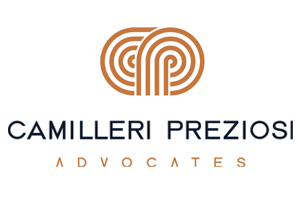Virtual Token Offerings – A shift from ICO to STOs
Over the past couple of years, the word ‘blockchain’ has been tossed around extensively, particularly in Malta, with the jurisdiction purporting to become a self-described ‘Blockchain Island’. For the most part, the hype around blockchain technology is predominantly attributed towards the fundraising mechanisms associated with the technology. Blockchain offers a revolutionary platform for crowd-funding technology, with incredible potential to allow increased transparency, accountability, and security; with its most notable current applications being Initial Coin Offerings (ICOs) and Security Token Offerings (STOs).
Whereas the meteoric rise in the popularity of blockchain technology was based on a massive boom in the popularity of ICOs during late 2017, their presence and application has somewhat diminished in recent times, becoming rapidly overshadowed by the increasing reputation of STOs. This article shall seek to analyse the aforementioned fund raising mechanisms whilst observing the similarities and differences between the two, as well as the underlying reasons behind the shift from an ICO-dominated environment to one where STOs are now regarded as prevalent.
Understanding the technology:
First and foremost, it is important to understand the distinction between blockchain technology and Distributed Ledger Technology (DLT) in order to properly discuss the technology behind ICOs and STOs. First and foremost, the words ‘blockchain’ and ‘DLT’ are not interchangeable. On the one hand, DLT can be defined as a database existing across several locations or among multiple participants wherein transactions are recorded in multiple places at the same time[1]. Meanwhile, blockchain is merely one facet of DLT technology, which records information in so called blocks of data, with such blocks being linked in a sequential manner and encrypted through cryptography, and with each block having a fraction of the previous block. In summary, blockchain is DLT, but not all DLT is blockchain.
Essentially, the main benefit which Distributed Ledgers offer is the fact that, unlike traditional databases, they are decentralised, meaning that they have no central data store or administration functionality, and are instead stored across multiple nodes.
ICOs – Initial Coin Offerings:
ICOs began surging in popularity in 2017 following the exponential amount of funds raised during the first months of the year. However, blockchain technology has been around since 1991 when Stuart Haber and W. Scott Stornetta started working on a cryptographically secured chain of blocks wherein no one could tamper with the timestamps of documents. In 1992, the system was upgraded to incorporate Merkle trees which increased efficiency, thereby enabling the collection of more documents on a single block. However, it was only in 2008 that Blockchain history started to gain relevance, thanks to the work of the entity known as ‘Satoshi Nakamoto’ which developed the concept of bitcoin.
During their peak in popularity, ICOs were seen as a less costly, yet equally effective, alternative to the traditional Public Offering. Essentially, an ICO is an offer of a particular virtual currency in exchange for legal tender or another type of virtual currency, as the case may be, with the main purpose being the funding of a particular project[2].
In view of this it is pertinent to therefore identify the characterisation of a virtual currency, which in 2014, was defined by the European Bank Authority as;
“a digital representation of value that is neither issued by a central bank or a public authority, nor necessarily attached to a fiat currency, but is accepted by natural or legal persons as a means of payment and can be transferred, stored or traded[3].”
When dealing with ICOs, the offered virtual currency can be either a (1) cryptocurrency or (2) a utility token. A cryptocurrency can be defined as a virtual currency which is secured by cryptography (such as bitcoin), whilst a utility token is a digital token that can solely be used to purchase a good or service offered by the issuer of the utility token [4]. Therefore, it can only be used within the platform through which it was created.
Having examined what an ICO comprises of, one must keep in mind the regulatory landscape surrounding such a fund raising mechanism in view of the prominent risk of fraud, especially when considering the potentially considerable amount of capital raised. In fact, even though blockchain technology has been commended as being ‘trustless’, ‘transparent’ and ‘immutable’ there have been quite a few number of scams and security breaches. As a result, many jurisdictions have embarked on taking the necessary steps to regulate ICOs so as to minimise the problematic aspects of the technology, particularly due to the fact that such technology is still in its early stages and is continuously being developed.
Regulation was inevitable, especially when considering the extensive regulation surrounding traditional public offerings. In this regard, Malta was at the forefront of this regulatory intervention, and in November 2018 it launched three new legislative acts regulating DLT, with the most relevant piece of legislation in relation to ICOs being the Virtual Financial Assets Act (VFA Act).
In line with the approach taken by ESMA[5], the applicability of such a legislative framework is almost exclusively dependent on the classification of the DLT asset. In fact, the VFA Act distinguishes between (1) Virtual Financial Assets, (2) Virtual Tokens (which is the term typically attributed to utility tokens), (3) financial instruments and (4) e-money. Such categorization is determined through the application of a Financial Instrument Test (FIT) issued by the MFSA. In this regard, it is of paramount importance to note that the VFA Act is solely applicable to offerings of Virtual Financial Assets and consequently, utility tokens remain unregulated. Ultimately, the introduction of the VFA Act will not affect the pre-existing regulation applying to financial instruments or securitized assets.
STOs – Security Token Offerings:
STOs can be described as a combination of an ICO and a traditional public offering. STOs are, in principle, quite similar to ICOs from a technological perspective since both are issued using DLT[6] and at the same time STOs are analogous to traditional public offerings with regards to the regulatory aspects thereof. That being said, STOs are offerings to the public of Security Tokens, which are securitised assets issued in a tokenized form, and which run on DLT. STOs have risen in popularity as of mid-2018, with an extensive growth in 2019[7] and are now steadily being preferred over ICOs[8].
Since security tokens are essentially tokenized securities represented by means of a token, they are typically considered to fall within the definition of ‘financial instruments’ as found under the Markets in Financial Instruments Directive[9], thereby being subject to EU financial legislation. Therefore, once the FIT has been conducted and the token is categorised as a ‘financial instrument’, it will fall outside the remit of the VFA Act and be subject to EU financial legislation pertaining to traditional public offerings, which inter alia include, MifID II as transposed through the Investment Services Act, the Prospectus Regulation[10] and the Market Abuse Regime[11].
This is one of the main reasons why people are opting for STOs which ultimately provide more legal certainty, thereby making such offers more reliable and reliability. Moreover, STOs also offer several benefits, such as increased liquidity, which is a direct result from the possibility of tokenizing assets such as real estate, which is typically highly illiquid. Apart from that, there is also the automation factor which renders several procedures such as parts of the settlement which ultimately increases overall efficiency. In addition, the reliability of blockchain-based transfers, as well as the aspect of full traceability of such transfers provides an additional reason for the shift towards STOs.
You could also argue that the above is what motivated the introduction of regulation in the ICO space, which is what the VFAA seeks to achieve, albeit with a lighter touch than MiFID.
The MFSA has recently issued a six-part consultation document on STOs as part of the National Capital Markets Strategy, which aims to enhance legal certainty within the area.
ICOs vs STOs:
As elaborated upon earlier, ICOs and STOs contain similar features, with both being offers to the public of an asset, through the use of DLT. However, they have fundamental differences, the most vital being the nature of the issued unit. An ICO concerns an issue of a unit of cryptocurrency or utility token whilst an STO concerns an issue of a tokenized security. This is obviously a very important distinction since cryptocurrencies are chiefly intended as a means of payment, whilst security tokens can either be designed in the nature of traditional securities, such as shares or bonds, or they can also be designed in an innovative manner such as the representation of a particular asset in a tokenized form.
As aforementioned, some countries have begun to regulate the issue of virtual assets through an ICO, with Malta being one of the pioneers on this front through the implementation of the VFA Act. Comparatively, STOs are subject to a mature and worldwide regulation, with long-standing rules in this regard and although jurisdictions may differ in the specificities of their regulatory framework, there is still a predominant sense of legal certainty, as opposed to the ICO sphere, which remains largely unregulated. Additionally, since securities regulations have existed for so long, it is to be expected that they offer a more reassuring level of legal certainty, consumer protection and transparency in comparison with the recently enacted ICO laws which are yet to undergo the test of time.
Another important distinction, which is consequential to the aforementioned point, is the fact that ICOs are considered more as a risk rather than an investment, especially due to the volatile nature of cryptocurrencies and due to the extensive number of scams in past ICOs. Additionally in an ICO, the investor is essentially predicting that the token will appreciate in value, whilst an STO represents traditional securities like debt, equity or convertibles which provide the investors with rights entitling them to a financial interest, thereby rendering STOs a more stable and secure alternative.
The Shift from ICOs to STOs
Together with the increasing popularity of STOs, we have also seen a proportionate decrease in the ICO space. In fact, in the fourth quarter of 2018 alone, approximately 642 ICOs were launched, in contrast to approximately 176 in the third quarter of 2019[12]. Contrastingly, in the first quarter of 2018, approximately 14 STOs were issued, while in the first quarter of 2019, approximately 47 STOs were issued[13].
There may be a multitude of reasons for such a shift, however the main one is likely related to the extensive amount of uncertainty of investment surrounding the ICO space. In fact according to a study undertaken by Satis Group LLC, 81% of ICOs that they analysed had turned out to be scams[14]. This is largely due the fact that ICOs usually raise funding for a particular project, with nothing tangible backing up the offering, as well as due to the unregulated nature of ICOs, which renders them very susceptible to fraudulent activity. This is precisely what happened with Bitconnect, which ended up closing its lending service and exchange service, thereby resulting in a 96% price decrease of the Bitconnect cryptocurrency.
Furthermore, as a result of the lack of regulation of ICOs, there is little to no investor protection in relation to the coin offering, with investors hardly offered any protection on their investment. On the contrary, STOs are typically always backed by some form of tangible asset and/or business, and are highly regulated all around the world, thereby increasing the level of consumer protection and preventing investors from falling prey to fraudulent business practices[15].
Paradoxically, another reason for the decline in ICOs is a result of the regulations implemented by some jurisdictions. Even though many wish to take advantage of ICOs, they would typically not wish to be caught on the wrong side of the law.[16] Although regulation is undoubtedly necessary, there may be instances where it may be considered to be excessive, thereby defeating the purpose of considering an ICO as an alternative means of raising finance. This was debated in the context of the Malta VFA Act, which received extensive criticism due to its extensively rigorous requirements and restrictions. Such restrictions include inter alia;
The issuer required to ensure that an investor does not invest more than €5,000 in its initial VFA Offering over a 12-month period, unless such investor qualifies as an experienced investor; and
Several obligations imposed on certified VFA Agents[17], such as indemnity insurance cover and the considerable capital requirements.
Ultimately, stringent regulation as well as uncertainty as to the outcome of regulation might be an additional reason for the shift[18] towards STOs, since an issuer would likely consider an STO as a costly option, but more appealing to investors, due to the nature of the token being offered. In addition authorities and issuers could rely on experience in relation to the issue of securities, providing an additional element of certainty to the issuer.
Furthermore, from the investor point of view, ICOs may be perceived as less attractive in contrast with STOs, specifically due to the extreme fluctuation in cryptocurrency prices, as experienced during the course of 2019. On the contrary, securities typically offer a more stable investment, as a result of their representation of either equity in a company, interest in a particular asset, debt in a company, or a combination of both by means of a convertible security, saving any other types of innovative securities which might emerge from the use of DLT. Naturally, this allows investors to be relatively sure that the token in which they invested in will not dramatically lose its value overnight[19].
Concluding remarks:
On a final note, time will tell whether STOs will completely substitute ICOs, and whether they will withstand the test of time and become recognized as an alternative means of finance. One may also consider the possibility, of STOs in the future not only substituting ICOs but also rising on par with traditional public offerings, if not favoured over such traditional public offerings.
Bibliography
[1] ttps://tradeix.com/distributed-ledger-technology/
[2] https://www.investopedia.com/terms/i/initial-coin-offering-ico.asp
[3] https://eba.europa.eu/documents/10180/657547/EBA-Op-2014 08+Opinion+on+Virtual+Currencies.pdf
[4] https://medium.com/coinmonks/utility-tokens-a-general-understanding-f6a5f9699cc0
[5] European Securities and Markets Authority
[7] https://thetokenist.io/report-security-token-offerings-stos-increased-by-130-in-q1-2019/
[8] https://www.financemagnates.com/cryptocurrency/icos/stos-the-new-fundraising-standard-to-replace-icos/
[9] Directive 2014/65/EU
[10] Regulation (EU) 2017/1129
[11] Regulation (EU) No 596/2014 & Directive 2014/57/EU
[12] https://icobench.com/stats
[13] https://thetokenist.io/report-security-token-offerings-stos-increased-by-130-in-q1-2019/
[14] https://hackernoon.com/ico-vs-sto-all-you-need-to-know-about-the-new-fundraising-method-in-the-crypto-world-54a1a43a08d6
[15] https://hackernoon.com/ico-vs-sto-all-you-need-to-know-about-the-new-fundraising-method-in-the-crypto-world-54a1a43a08d6
[16] https://blog.platinum.fund/en/general/will-stos-eventually-replace-icos.html
[17] The VFA Agent is a functionary acting as a liaison between prospective VFA issuers or VFA services providers and the MFSA. The VFA Agent’s role is to act as a first line of defence for the Maltese financial system against financial market misconduct by preventing persons that are not fit and proper from setting up operations in or from Malta.
[19] https://smartereum.com/47343/crypto-latest-update-why-security-token-offerings-stos-will-replace-initial-coin-offerings-icos-crypto-news-today/







